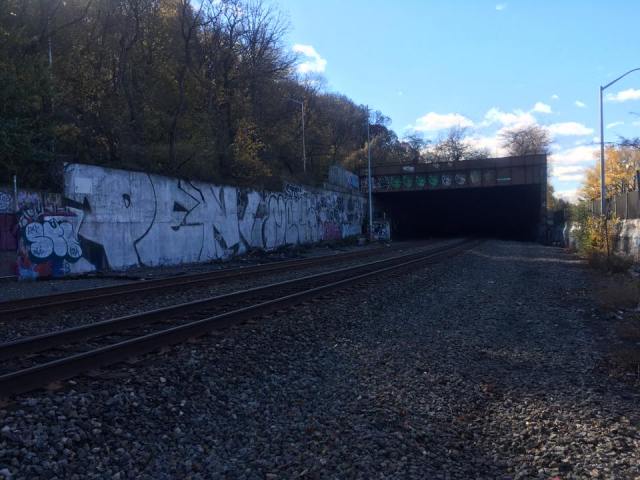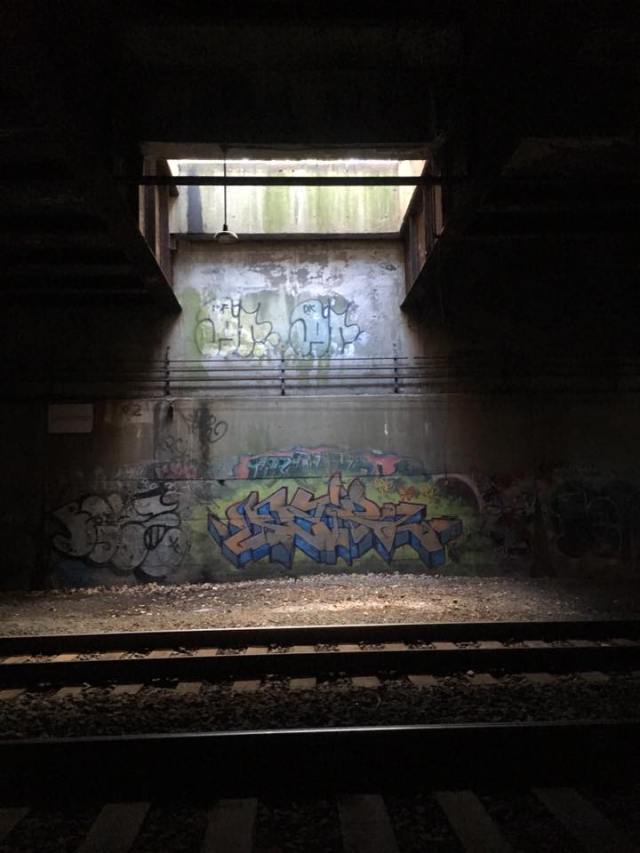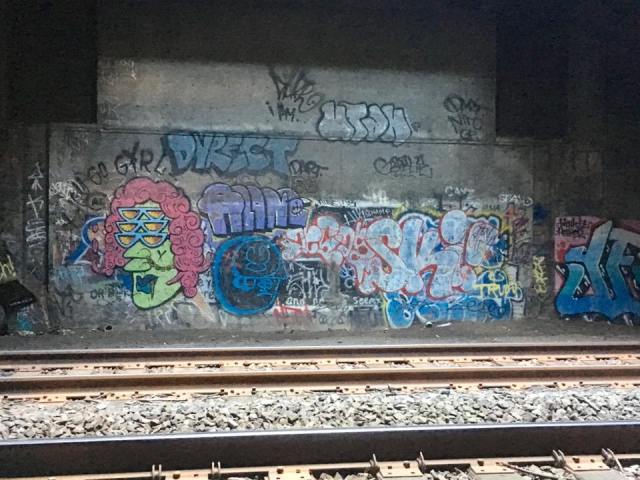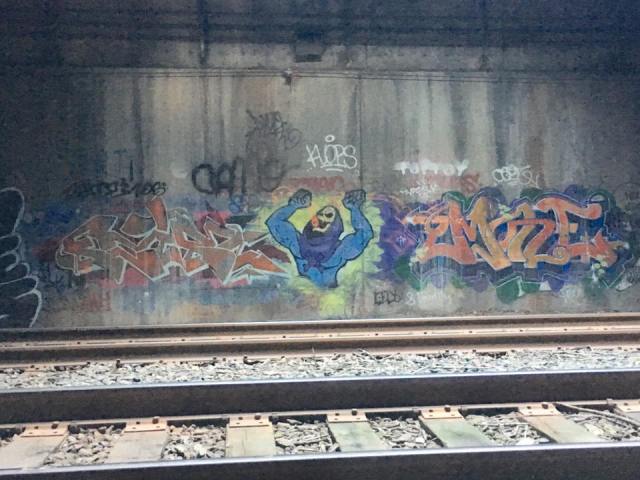Whenever someone uses the term “mole people”, it strikes most as a grandiose term typically only reserved for pulp science fiction yarns, grindhouse cinema, or other more flamboyant forms of fiction. The term, which is meant to represent an underground colony or society existing hidden within a city, exists only as urban legend in the minds of most. That is unless you watched “Demolition Man” and thought it was a modern documentary.
However, in the case of New York City, the “myth” of the mole people was at one point in time a reality. In 1980, a tunnel that ran under Riverside Park for the Amtrak train system ended its services through that particular location. The railroad system abandoned the Upper West Side tracks because they found far greater success transporting through yards in New Jersey and the Bronx. As a result the tunnel system became abandoned. As a result it became a haven for a large homeless community, who called this quirky locale home. And when I say homeless “community”, I am not suggesting a handful of 9 or 10 individuals. There were literally hundreds and by some rumors and reports, up to a thousand people cohabiting these tunnels together. One thing that should be made clear, however, is not all of the homeless that lived in these conditions were driven there by destitution; some individuals simply chose to live there out of a desire for their lives to be “off the grid” of conventional city life. Sure, there were likely some young adults in the 80’s and 90’s who thought that living in a rundown apartment in Harlem was the pinnacle of bohemian life, but populating a hidden Amtrak tunnel underground Riverside Park probably trumps that. Although admittedly, it’s easy for a living space to be “rent control” when you aren’t paying rent at all.
The homeless who occupied this location proved to be quite resourceful as well: they operated out of multiple tents, would loosen pipes to provide running water to the tunnel location, decorated the walls with ornate graffiti, and had even figured out how to pirate electricity for their “shantytown”. It should also be noted that the extremes in the homeless community still exist today in some measure: you can find homeless people in Washington Square Park who are spellbinding chess geniuses and you can also find them fondling themselves into the trash cans at the Port Authority Bus Terminal (and no I am not being overly salacious. I have witnessed both many times. Variety is the spice of life I suppose). The homeless colonies were ultimately driven out when the Amtrak tracks began to be used once again for other train services, thus ending a colony that housed some residents who had called it home for over 10+ years.
Upon moving to New York, there were many sights that I was determined to experience, but for me the Freedom Tunnel (named after a mural that existed in the tunnel for many years by noted graffiti artist Chris “Freedom” Pape) was the Holy Grail of New York discoveries. Sure, the Guggenheim or the top of the Empire State Building has its charms, but EVERYONE who arrives to New York of their existence; I wanted to track down a unique experience that wasn’t known to the average New York visitor. Despite no longer housing the homeless communities it once did, it continues to be a popular location for graffiti art and a fascinating exploration on how over a hundred homeless citizens survived the harsh conditions of New York in the 80’s or 90’s.

I finally had the opportunity to enter the Freedom Tunnel a few days ago (which is located off of the 125th St stop for the 1 Train), and my time exploring it was certainly engaging. The ground leading to the tunnel is littered with very thick, harsh stones, and even with a pair of pretty durable tennis shoes it is taxing to the feet. I highly recommend a strong pair of boots or Timberlands while exploring this area; if you are wearing Crocs, remember to take them off when you get home, burn them, and think about the great shame you have brought to your family and friends. As you enter into the tunnel you begin to see some of the most rudimentary forms of graffiti that exist throughout the length of the tunnel adorning the outside.
One of the first things that becomes very apparent as you explore the interior of the tunnel is the fact that the tunnel is not pitch black or shrouded in darkness. Overhead grates every few yards project a wash of light downward throughout the tunnel, meaning the homeless communities were provided with natural lighting during the daylight hours. This likely details one of the reasons this particular location was so desirable for the homeless community: despite being isolated and hidden the tunnel never feels completely shut off from the outside world because of the presence of this light. I would suspect this also would have allowed the homeless communities to cultivate plants and things of that nature, if done properly and carefully. There were several areas where puddles had formed from water leaking from the ceilings, but due to the considerable length of the tunnel there was still plenty of space to remain completely dry and unaffected by this if one was to live there.
From the moment you enter the Freedom Tunnel the graffiti art is everywhere, and much of it is very ornate and unique. As graffiti artists have made a visit to this tunnel a routine pilgrimage the art is constantly changing and evolving, but there are some mainstays, such as art of former beloved New York Mayor Ed Koch (the picture below that looks like Paul Giamatti playing Martin Van Buren is, in fact, former Mayor Ed Koch). As prefaced before, the art tends to be more populated in spots where the light is pouring in from the vents above. Even Skeletor from “Masters of the Universe” makes an apparent in this unique art collection.




If you think about it, the marriage of graffiti artist and the Freedom Tower makes complete sense: graffiti was and is the art form of the disenfranchised and is an art style that is still shunned by a large portion of the population, a quality it shares with the homeless cultures that used to inhabit the tunnel. The tunnel ultimately ends near the tail of Riverside Park, and is fenced off to this day.
It is rather shocking that such a large population of individuals in New York City, some out of desperation and some voluntarily, were able to take something like an abandoned Amtrak tunnel and transform it into a fairly hospitable abode all things considered. In a city that harbors its share of secrets and surprises it still stands as one of the best hidden gems New York has to offer. If you are interested in learning more about this subculture from New York’s past, check out the terrific documentary “Dark Days” by Marc Singer, or the book “Tunnel People” by Tuen Voten. It will no doubt provoke you to take greater consideration as to what is happening directly under your feet while walking in the city.



